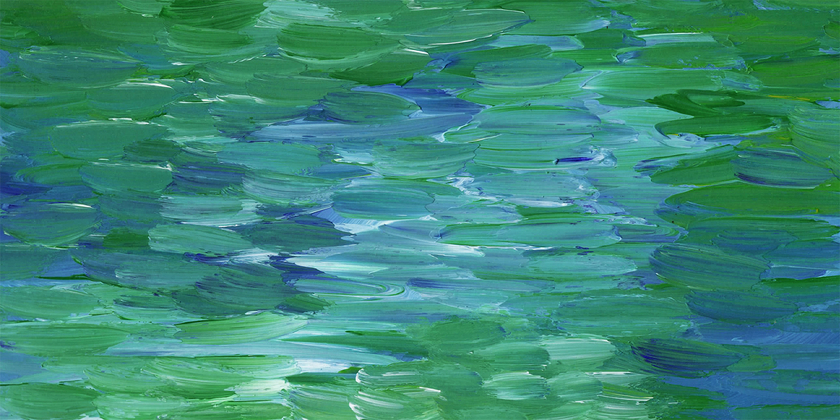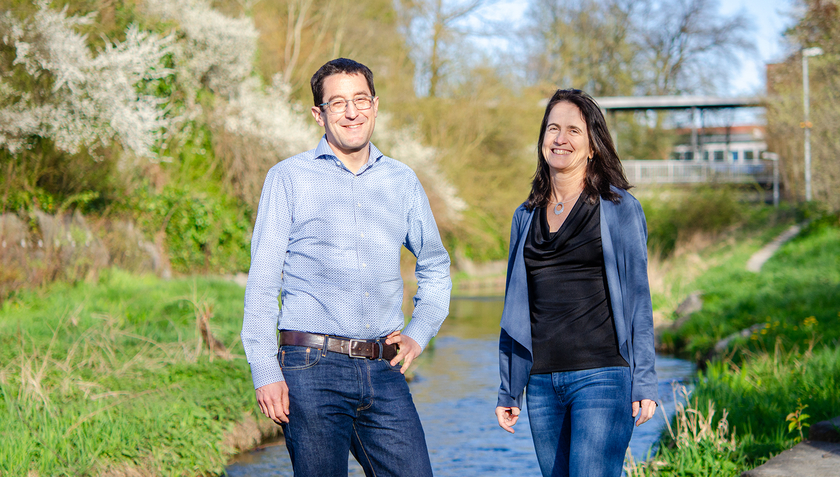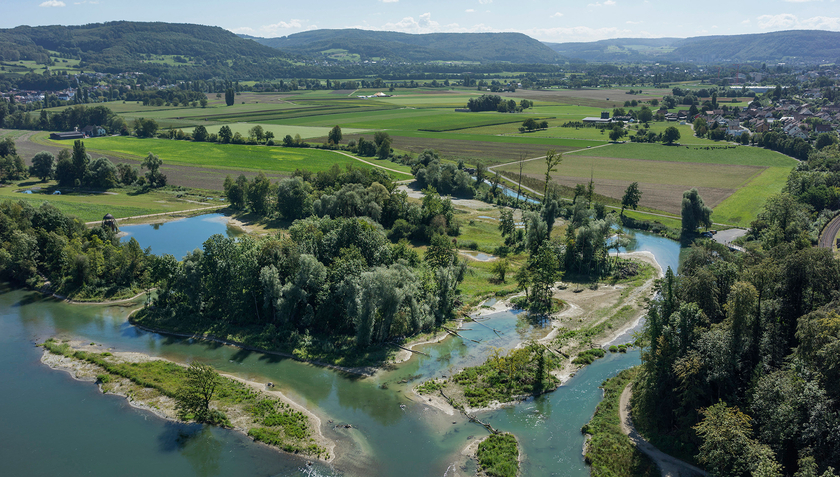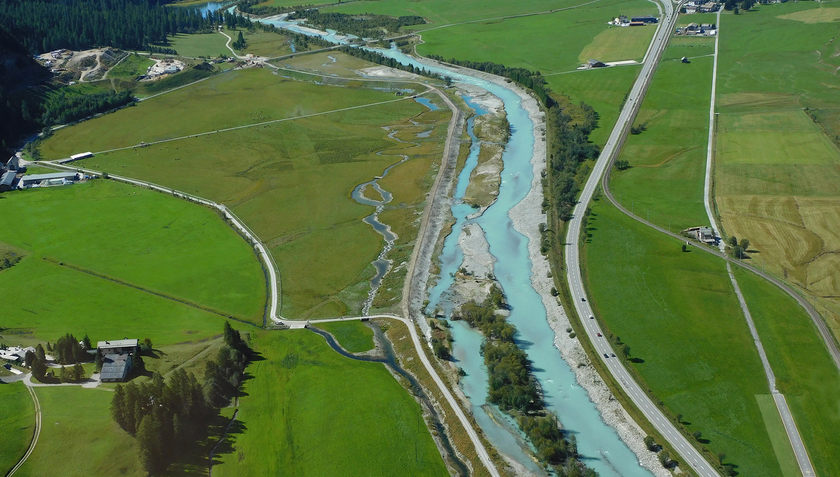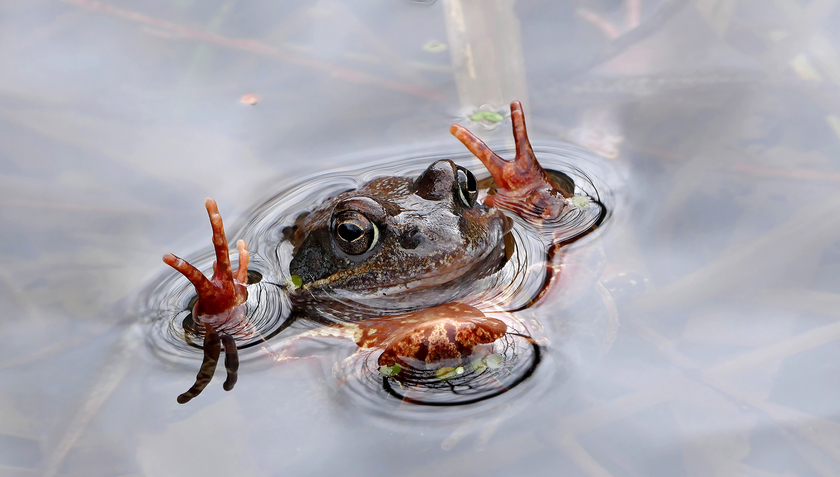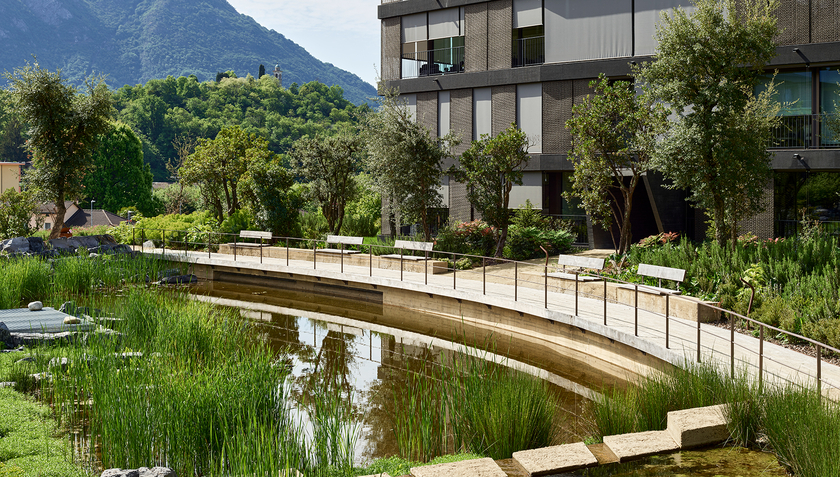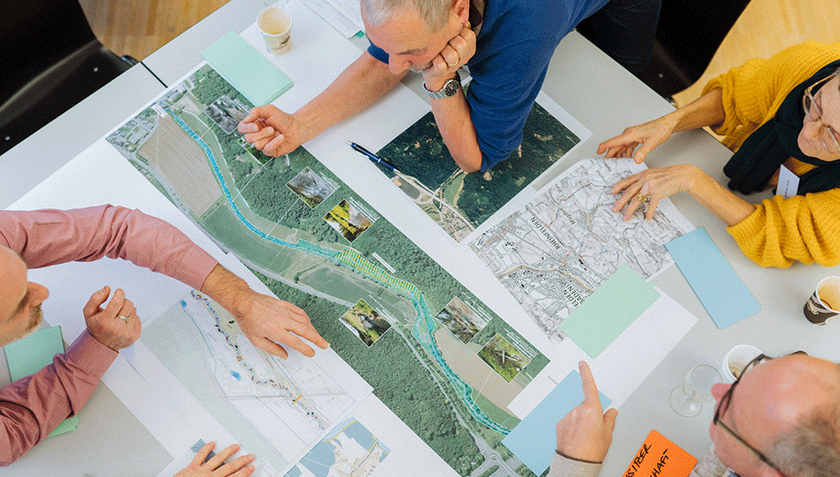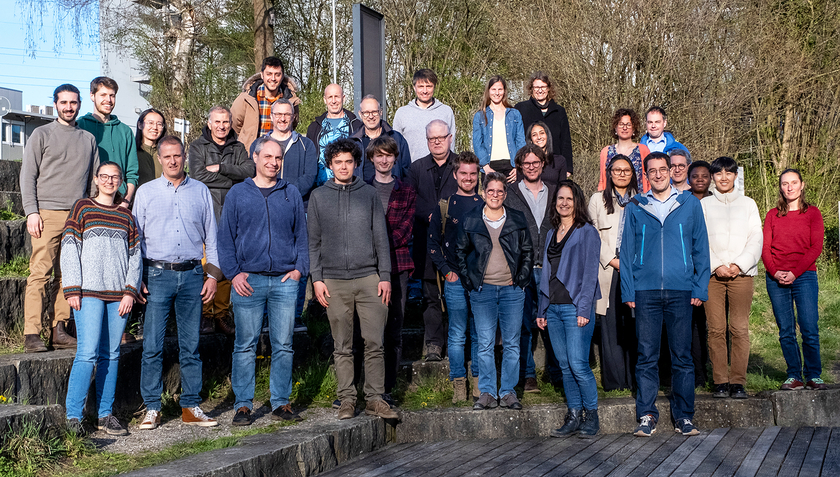Info Day Magazine Special 2024: Recognising, conserving and promoting blue-green biodiversity
Where aquatic and terrestrial habitats converge, pervading and enriching each other, you find an incredible diversity of lifeforms.
But the richness of species is under threat because humans are encroaching on the blue-green habitats.
In the ‘Blue-Green Biodiversity’ research initiative, researchers from Eawag and WSL have investigated biodiversity at the interface between water and land. At the Info Day Special on 3 September 2024, the two research institutes jointly presented the results of selected projects. The most important results and key messages have also been published in the magazine ‘Identifying, preserving and promoting blue-green biodiversity’ which we would like to present to you here.
PDFs and print versions of the magazine are available in German and French only. Selected texts are also available online in English, see below.
Chapter 1: “The blue-green spirit from the research initiative will live on”
An interview with the two co-leaders of the research initiative, Prof Catherine Graham from WSL and Prof Florian Altermatt from Eawag about the innovative value of the research initiative Blue-Green Biodiversity BGB, the close cooperation between the two research institutes and blue-green thinking.
Chapter 2: Water and land – closely interlinked
The interrelationships between aquatic and terrestrial habitats extend far beyond the riverbank and floodplain areas. These interactions influence the stability, resilience and functioning of entire ecosystems. When conserving and managing habitats, it is essential to take these interactions into account.
Chapter 3: Status and development of blue-green biodiversity
There is a great need for action to preserve and promote blue-green biodiversity in Switzerland. The measures taken so far are encouraging and are having an effect, but are not yet sufficient. For example, climate change is a major challenge.
Chapter 4: A blue-green success story
The landscape needs more water bodies to promote and restore blue-green interactions. There is a great need for action. But there is also some good news: targeted measures are successful. For example, the construction of several hundred new ponds in the canton of Aargau has greatly boosted or at least stabilised the populations of almost all amphibian species.
Chapter 5: Clever cities and communes create blue-green infrastructures
A network of near-natural habitats in urban areas is an attractive solution to mitigate the effects of climate change and reduce biodiversity loss. This requires the multifunctional design of blue-green infrastructure and cooperation between the various players from different specialist areas.
Chapter 6: Planning and implementing ecological infrastructure together
Switzerland needs intact networks of ecologically optimised areas that include both aquatic and terrestrial elements. This not only requires an ecological analysis, but also a stakeholder analysis should be carried out in parallel. This allows gaps and synergies to be identified.
Chapter 7: Perspective
Around 80 researchers from Eawag and WSL have investigated biodiversity at the interface between water and land as part of the ‘Blue-Green Biodiversity’ research initiative. Together they have achieved a great deal.
Infographic
The “Blue-Green Biodiversity” research initiative has uncovered exciting and sometimes surprising interdependencies between water and land. The blue-green system can be seen in the left half of the illustration. The right half shows a landscape in which water and land are clearly separated (Infographic: Visimon Studio).
Cover picture: Jael Klaus
Contacts
Co-Leaders of the research initiative
 | Prof. Dr. Florian Altermatt Tel. +41 58 765 5592 Send Mail |
 | Prof. Dr. Catherine Graham Tel. +41 44 739 2361 Send Mail |
Scientific Coordinator
 | Dr. Morgane Brosse Tel. +41 58 765 5798 Send Mail |
Order Info Day Magazine
The Info Day Magazine is available in German and French.

